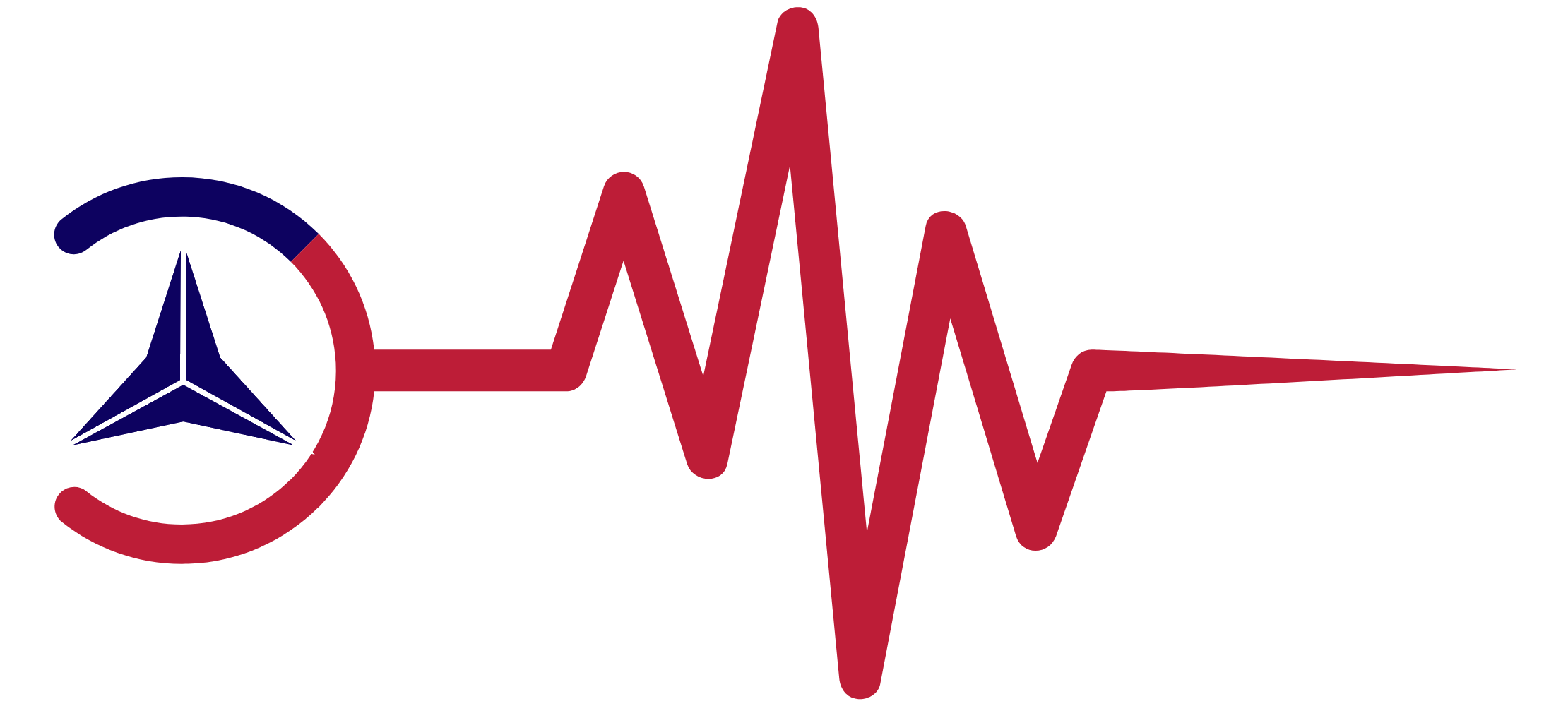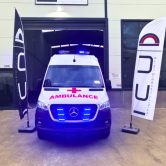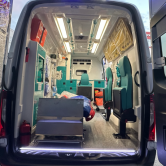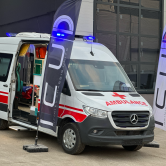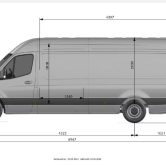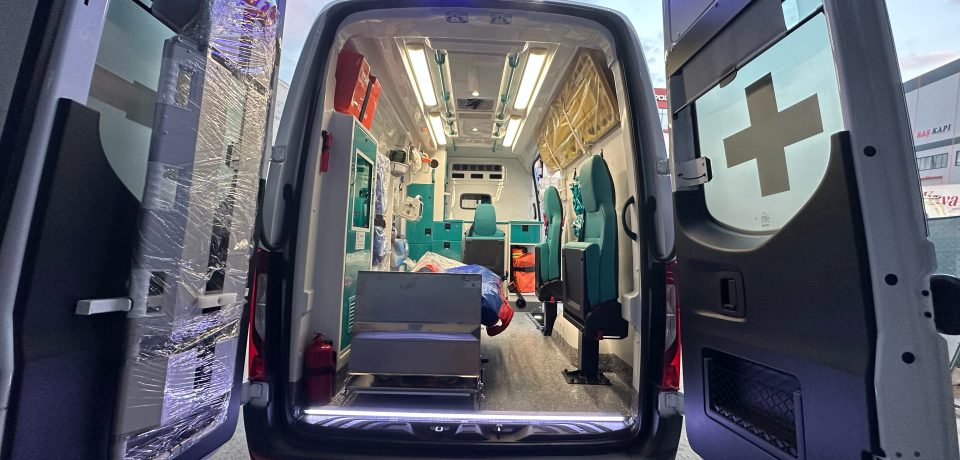
Design and Technology Innovations in Sprinter Ambulance Manufacturer by ICU Automotive
1. Introduction to Sprinter Ambulances
Sprinter Ambulance Manufacturer; An emergency ward, or an ambulance, serves as the connecting spindle in the delivery of emergency medical services. An ambulance is a vehicle uniquely designed to transport critically ill or injured persons to health care facilities, often complemented by medical care delivery on the road. When ambulances were designed, ordinary transportation vehicles and commercial vehicles were redesigned to enable a practical spacious design to accommodate all the necessities an emergency ward might need. They were also redesigned to enable a practical design that had enough space for an ambulance worker to mobilize either sitting or standing. Similar to any ambulance, a Sprinter ambulance is designed in different sizes, styles, and shapes, as there are currently available ambulances that serve different purposes equivalent to the different sizes and shapes. All of the above facilities, as well as the innovative features that we are going to discuss, are not present on any other type of ambulance. Sprinter ambulances are generally meant as transport ambulances. They are not for advanced life support, pseudolife support, neonatal transportation, or mobile ICU. In Sprinter ambulances, there is no partition between the patient’s cabin and the emergency room. Ambulances with such configurations usually have a seating area for an emergency worker or a small chair and other medical care delivery resources. Such ambulances are generally the main focus for basic life support patients currently available at a few.
1.1. History and Evolution Sprinter Ambulance Manufacturer
Sprinter Ambulance Manufacturer; The ambulance volante—literally, “flying hospital”—is a popular name for ambulances in general and emergency vans, specifically for their rapid movements between points in a large district. There is another type of ambulance that owes its popularity to its size, maneuverability, and outstanding fuel mileage. Chiefly used as a secondary patient transport vehicle, it serves as the main vehicle for backup emergencies. Since its introduction, this vehicle has been a quick response critical care ambulance of choice for both EMS services and hospitals. The lasting popularity of ambulances of this class is an identifier for the success of this build that provides an abundance of clinical space considering the size of the vehicle. In recent years, manufacturers of Emergency Road Transport Vehicles and Life Support Ambulances have been asked to make improvements to their Sprinter ambulances to account for the changes in medical science, cost controls, and driving technology.
Ambulance manufacturing has come a long way since the early days when installing handrails for the standing patient was a hot topic. Most designs in later days boast privacy curtains, aluminum wall tracking for the attachment of a myriad of accessories, rubber floor covering, and automobile-grade parts. To adapt to rules and standards initiated by the U.S. Department of Transportation and the Commission on Accreditation of Ambulance Services, psychiatric vans were developed for specific clients. But what worked in providing economical, safe transportation for mental health centers and similar facilities did not necessarily meet the greater needs of the average 9-1-1 call in the field. Appliances vary in most respects due to the simple force of evolution. The intensity of acuity in the field has escalated quickly. What was acceptable in the late 1990s is not only considered insufficient; it is almost unnecessary. For example, a 9-1-1 call would prompt an emergency like an injury caused by minor bleeding. The dressing was usually adequate to stem the flow of blood from a laceration to keep the patient’s clothing from being soiled. If an ambulance was dispatched with the call, it was a basic ambulance, and the crew simply applied pressure dressing to the wound, maybe checked the patient’s vital signs, and sent the patient with directions to utilize self-care measures on his own or in the emergency room.
2. Importance of Sprinter Ambulances in Healthcare Sprinter Ambulance Manufacturer
Sprinter Ambulance Manufacturer; Sprinter ambulances are an essential component for any community. At minimum, these ambulances act as priorities in patient transport from rural hospitals with primarily emergency departments to larger hospitals with advanced medical specialties. At best, they are efficient emergency response vehicles with the ability to deliver advanced life-saving treatment on scene swiftly. This quick access to emergency care is associated with better patient outcomes.
Sprinter Ambulance Manufacturer are redesigned vehicles, built on the passenger van. Their unique features, designed in collaboration with healthcare practitioners, enable them to be the most patient safety-focused of any design. They pay particular attention to optimal clinicians’ workspace and safety, the facility for in-cab treatment, and improved patient and medical staff comfort. Integrally, Sprinter ambulances come equipped with advanced life support features as well as enhanced infection prevention measures. This reimagining of emergency medical services has led to an uplifting in regional and remote health national infrastructure.
From a design and technology perspective, this represents a thoughtful and innovative repurposing of an existing transportation infrastructure to meet healthcare needs. Although there are no formal economic evaluations of clinical outcomes yet to compare the two management strategies, multiple case studies show the benefits of these ambulances in terms of patient outcomes, quick access to clinical care, avoiding adverse events, and increased patient comfort. Sprinter ambulances have bolstered the speed of access to care that can improve outcomes in the time-critical care for medical events. Sprinter ambulances also provide valuable connections between healthcare facilities and communities and are understood to provide both safety and access into hospital. Sprinter ambulances close the dangerous gap that is often present when emergent medical care is far away from medical treatment and are a lifeline for integrated health networks.
2.1. Role in Emergency Medical Services Sprinter Ambulance Manufacturer
Clinical Service Vehicle (CSV) has proven its applicability in the realm of Emergency Medical Services (EMS). Sprinter ambulances are in high demand since they perform several vital functions in an EMS system, such as transport, trauma center emergency department backup, inter-facility transportation as a critical care transport vehicle, and a host of others. Sprinter ambulances are custom-built to save lives and alleviate suffering during critical situations. The design of ambulances has been evolving over the last century, continually improving the ability to work in various massive casualty and other emergency scenarios. Today, the ambulances have evolved into mobile treatment centers of excellence, where protocols, new drugs, clinical interventions, and procedures are created, tested, and performed in the field. The use of these ambulances and the highly trained crews that operate them form the foundation of progress and require a sizeable capital and operational commitment.
Sprinter Ambulance Manufacturer Examples of unique emergencies in the United States include those involving extrications with special equipment, non-surgical metal-cutting devices, long extrications, embankment and water relocations, and potentially requiring a group of personnel to keep a patient stable for insertion into a fixed-wing or rotor-wing air medical vehicle. Every air medical base in North America must transport patients with Intra Aortic Balloon Pumps and have IABP and Tandem Heart capability, with many of these specialty capabilities available upon patient arrival in the ambulance. Sprinter ambulances can have personnel trains and equipment substitutes or be physically made up to accommodate field assessments, treatments, and hospital resources that vary by some percentage across the United States, and evolve and change over time. As the businesses of integrated healthcare, managed care, emergency medical services, and public health change, the ambulance is not remaining the same vehicle. It and its capabilities are constantly evolving and integrating into a healthcare system that will provide the best care to the most number of patients for the least amount of money. The groups that do this in the back of the ambulance are arguably the most highly trained, most cutting edge, and most well-equipped to deliver patient care in “hip pocket” mode of any group in medicine. Perhaps the anecdote “We’re planning on making mistakes” here retains its historic applicability even today in the development of a new technology. The line used with the autonomous off-road vehicle design is “Fail early, fail often, and fail cheaply.” The ambulances and their teams that save lives, teach healthcare providers, and create protocols and design drugs that save future patients will be told by future speakers that their technologies have saved more lives, more effectively and in the most efficient of government and local, competitive and academic environments. In any country, the capacity of an ambulance is probably still potentially greater than the capability of the healthcare team resting behind the cargo bag doors waiting for the next call. Technology has sped up the process and brought the potential to the forefront.
3. Key Features and Specifications of Sprinter Ambulance Manufacturer
Sprinter ambulances, built by ICU Automotive in Turkey, are designed to provide an ideal solution as an emergency service vehicle. Sprinter ambulances allow for ease of access for the patient and a comfortable and ergonomic workspace for the medics. The interior is designed to meet the needs of medical professionals, including the provision of space for medical equipment disinfection. Dividing space into “clean” and “dirty” areas, independent storage solutions, and a comfortable personnel transportation zone where all crew members are essential technical details. Showing the ultimate attention to the layout design from all angles, the Sprinter litters are turned into a big cabinet by setting up the U-shaped narrow stowage cabinet system that provides maximum free space in the cabin all around. In the layout of ambulances, the ergonomic characteristics of the job are the first step to be considered. In addition, attention has been paid to the design of the manipulator system. In the Sprinter, the single-arm stretcher mounting system is designed in such a way that a long, comfortable wall-side bed can be created from the cabin in the narrow ambulance. The vehicle features medical floorings and waterproof plywood, as well as a special heat-and-sound insulation material. It protects from blistering caused by water, blood, medication, disinfectant, and other liquids inside the transport area. With its beveled top edges, the nurse cabinet, which creates a sense of spaciousness in the cabin, has been designed in such a way as to transport and use the necessary equipment and medicine and to protect the athlete and the staff against possible impacts and sharp edges. The layout of the ambulance was planned in a single line with crossover access possibilities. In a multi-seat Sprinter ambulance, optional suitcases, medicine cabinets, and medical devices, special brackets for the seat with or without a seat shelf, elevating side or frontal seat, and ambulance shelves can be selected. These vehicles successfully meet the standard. The product is ideal for rescue emergency services with economical operation and long-lasting life, high maneuverability, low fuel consumption, easy maintenance, repair, and high part replacement rate. Sprinter ambulances, which confer an advantage with low operation costs—even lower fuel consumption at service—when they are operated in both the field and city center, create a productive and efficient health system through the services they provide in ambulances. The modular design of the furnished part of the transporter ambulances allows for the ability to shape interior spaces directly according to needs. At both rear corners in the back of the room, coniforms were placed in accordance with the geometry of the vehicle. It provides dozens of extra cabinets instead of the cabinets that come as standard in the vehicle. The two lights located on the ceiling provide sufficient lighting, and the inside of the vehicle, where the personnel will use the stretcher panels, will make a big difference in terms of ergonomics. A small cabinet between the infusion compartment and aspirator will also provide full efficiency. It has three single beds and a bedside shelf on both the right and left narrow layouts.
3.1. Vehicle Design and Layout Sprinter Ambulance Manufacturer
In an ambulance, as in any emergency facility, proper spatial organization and willingness to facilitate access to necessary instruments or medical equipment are crucial for fast diagnostics and medical interventions. The layout of the sprinter vehicles is designed to provide rapid and safe access to the patient and to enable immediate diagnostics, medical procedures, or patient stabilization. The configuration of the ambulances depends mainly on the type of medical services to be provided. This is driven by features of emergency medical services in a certain area or by the area in which the ambulance will cover. The spatial layout is determined by the crew workflow to ensure an efficient course of actions.
The ambulance vehicles are crucial in delivering practical patient care and treatment during patient transportation and administering primary medical care in life-threatening situations. The patient compartment is the most important area of the ambulance vehicle because its main objective is to save the life of the patient. In terms of layout, the performance, material, ergonomic, and environmental elements were targeted and focused. The design criteria aimed at solving the contradiction between the maximum operating space and the medical equipment functionality were revealed. Nowadays, this problem is being solved by up-to-date medical equipment miniaturization or usage of multi-functional medical equipment. However, they are expensive and may not be efficient. The patient space is equipped with modern medical equipment, and all of them are placed on ramps counter to the stretcher down to the deck entrance. The layout of the equipment and its size ensures active patient monitoring and patient vital sign reading. The windows and the window of the patient deck entrance are designed against the patient crew’s eye level. Thus, no jugglery is seen by the patient crew. The cantilever grounded technological equivalent structure to the top stretcher is introduced in the medical equipment layout. The dressing counter predisposes the spinal immobilization and cervical collar approach, and a long stretcher is preferred. Safeguarding according to requirements on patient and medical crew is tested in the sprinter vehicle. Natural lighting was achieved for all patient and stretcher loading areas. Standard loading can be carried out. There are no buttons to press to turn on the headlights to the ambulance dealer-rear lighting. Accommodation for all patient and dressing materials is made to be long-lasting against environmental conditions.
The modified sprinter ambulance vehicles amended by under shutter increase the additional patient and assist personnel work area. Medical personnel and technicians can work in an environment where both summer and winter conditions are maintained at a certain degree. It is possible to provide hot water and hot food during evacuation and transfer operations on and off the road. Stove systems used in a variety of camping and caravan vehicles were preferred. It can be used safely on the road where there is no gas or electricity. In accordance with the legislation and working conditions, patient-evacuated ambulance vehicles were directed towards ergonomic medical equipment in the driver front-view section. The camera system with night vision has been removed in the vehicle for a safe journey. An ambient lighting system has been designed for the comfort of the patient crew. Model, temperature, and brightness can be changed to provide a comfortable environment for the patient crew. The medical and nursing echelons can be used as a resting space or as a standby to the main operating room. The clothes, personal belongings, and health equipment of the hygienic personnel and nutrition personnel are designed for a separate section in the layout of the washing machine, dishwasher, and small kitchen equipment. The layout of the resting room is designed to take into account all sorts of needs. Interior design is protected against environmental conditions.
4. Technological Advancements in Sprinter Ambulance Manufacturer
Technological advancements that transformed ambulances have also significantly improved Sprinter ambulances. Through communication systems, it is now possible for a paramedic to begin managing a patient’s care at home and even adjusting equipment and medicine in an ambulance prior to the patient’s arrival at a hospital. Vehicle technology can interact with specific medical devices on patients as well. There are drivers and barriers of manufacturing and design integration. After an extended literature review on how technological advancements influence product design, it became clear that most studies describe advanced systems in isolated strategies. The technologies found in recent years concerning ambulance design and construction were used with a focus on the environment of care, emphasizing patient comfort over emergency care itself.
These were more design and construction integrations of ambulance vehicles and medical care facilities in a clinical environment. Developments in technology to be used in ambulance manufacturing are emerging. Although these have not yet been implemented in ambulances, the possibility to do so already exists. The addition of these technologies in the future could therefore greatly increase their spatial functionality, and therefore also the quality of care, patient or not. For example, the Mercedes Sprinter was recently deployed with an augmented communication system, telemedicine, vehicle localization system, and automatic ECG recognition feature. In other medical fields, new technologies are already put into practice, incorporated into and with new design developments. Further developments in end-use technology are already being used, suggesting the possible adoption of concurrent engineering technologies and how ambulance design trends might evolve as a result.
Currently, the way in which Sprinter ambulances are developing means that they are offering significant benefits to improve patient care. The original innovations were to install telemedicine systems in dozens of Sprinter ambulances used daily by paramedics. These somewhat bulky systems have now been miniaturized and mass-produced, and can even interact with a vehicle’s own in-car system. Enhanced telemedicine systems can now automatically offer a screening assessment to a patient at the site of an accident, district nurse’s home, or hospital triage, instantly differentiating between low and high care patients. It allows a patient to be assessed by a doctor who is not at the scene of the accident, district nurse’s home, or hospital using real-time virtual video links. Voice and physiological data are not relaying exclusively within the ambulance. Most, if not all, ambulance communication systems are now voice activated, thus freeing the pre-hospital carer to concentrate on managing the vehicle and caring for the patient.
4.1. Medical Equipment Integration Sprinter Ambulance Manufacturer
Sprinter ambulances are designed and built to help care for patients while they are transported to a hospital. In recent years, there has been a noticeable acceleration in improvements in medical technology and tools. Ambulances are expected to be equipped with state-of-the-art medical tools. Without consideration of how medical tools can be stored, we would lose the ability to practice emergency medicine after the ambulance begins driving. Thus, with the newly initiated assembling designs and corresponding documentation lists, we began searching for advanced medical devices and tools to use in the ambulance. There were, of course, some challenges in integrating advanced medical equipment with the ambulances. The performance of the ambulances should be better when more items of medical equipment are integrated. However, we had to design the integrated systems with consideration of the performance and safety of the ambulances. In addition, a response has to be made to unexpected problems that may occur within the function of integrated systems. We would like to share with you some different kinds of integrated examples. We aligned the ambulance specifications with the state of advanced ambulance equipment in the market.
Efficiency and reliability of the patient monitoring systems onboard the ambulances are very important in order to diagnose early and perform the necessary treatments for the patient. To accomplish such onboard patient monitoring system performance, we studied and developed advanced systems. The trauma system analysis for the proper location of equipment and the design for fluid/medicament warmers were carried out, and considering the fixing equipment required for air-medical transport, a new design compatible with international air-medical regulations was developed. The onboard patient monitoring system uses advanced equipment. The advanced control panel with a large-sized LCD touch screen displays 19 ECG waveforms, 17 pressures, 3 intracranial pressures, 6 capnograms, 4 temperatures, ETCO2, and SPO2 waveforms simultaneously. A central nurse can view the patient state of two ambulance rooms of the seeking and dispatching ambulance by a remote screen using a private area network constructed between the dispatch center. The advanced equipment is equipped with the capacity to enable the remote control of all data recordings of the seeking ambulances by the center without requiring additional action by the local personnel. The monitors have the capability to enable data transfer to the hospital center for the records via wireless communication as well as wired communication. The standard 12-lead ECG, ICP, ETCO2, and SPO2 data used in the design and layout were obtained by consulting the medical equipment manufacturers on parameters such as product life cycle and reliability. A trauma systems analysis was deployed to set the medical tool design criteria. In the design process, the hydraulic and pressurization resuscitation system were used.
5. Case Studies and Success Stories Sprinter Ambulance Manufacturer
Ever considered an ICU team that travels between states, providing life-saving care at the site of a hospital or healthcare facility and then transporting the critical or non-critical patient to another state? Without advancements in design and technology, success stories such as these would be unheard of. In these next few pages, witness firsthand the length and severity of injury or trauma that ambulances have faced, and ultimately helped to overcome. Attend to the patient experiences with ambulances and consider the positive impact on their lives and the healthcare industry as a whole. These case studies highlight not only the necessity of ambulances as a part of the healthcare team, but also the innovative thinking and outlook that presents unique and eye-opening solutions to patients and service providers. They document the production and performance of ambulances for the very young to the very old, and for the wilderness to the urbanized; for the local general community to large urban hospital systems.
The following case studies have illustrated the positive patient outcomes that can result from the prototype delivery of ambulances. The stories come from a variety of healthcare settings and all document the pivotal impact that innovative thinking and technology can have in the realm of emergency medical services. The ambulances embrace a cutting-edge design that coincides with the ever-changing demands of healthcare facility patients and service providers, all predicated on response time and acute intervention. Providing an ambulance that is one of a kind for every season and similarly purposeful moments in patient care is what the ambulance is all about. Common to each case, the ambulance designed brings the community closer, ready to face head-on a variety of unfortunate medical and traumatic events characterized by injury and illness affecting our loved ones. The ambulances are indeed harbingers of hope and reassurance.
5.1. Real-world Applications and Impact
Sprinter Ambulance Manufacturer
Previously mentioned, more than 110 German ambulance services are operating over 20 different designs of Sprinter emergency ambulances. Exceptional incidents deepen the desire to use these high-end EMS vehicles and specific medical equipment. In December 2021, a Sprinter ambulance proved its operational necessity during the emergency situation in the building collapse in Rotterdam. During that response, it was one of twelve ambulances employed, with the paramedic stating after the incident, “Technology in the ambulance contributed to a lot more surviving patients.”
The Dutch prehospital treatment has a lower level of care compared to German and US EMS; however, the Sprinter ambulance maintained its significance. This Dutch example confirms studies on US EMS concerning their reduced time to treatment through the capabilities of their ambulances. A Sprinter ambulance equipped with a neonatal care system kept an extremely premature baby alive during a 189-mile transport from South Molton to an intensive care unit in Cardiff. In August 2021, staff organized the life-saving transfer to help Baby Logan get the urgent care he needs. Collective work and considerable time savings were achieved with this Sprinter van’s early decision on definitive treatment during this COVID time.
